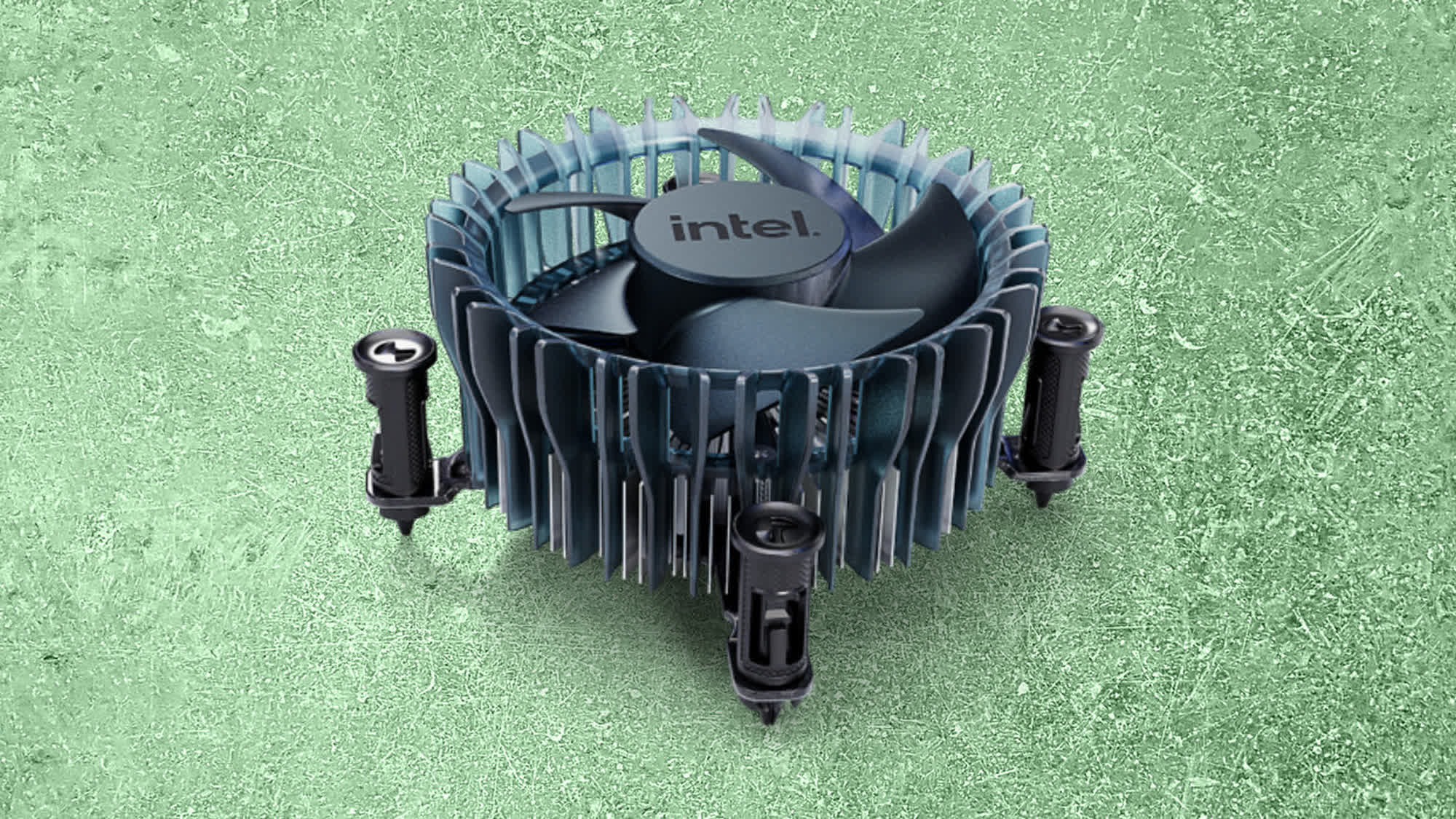TL;DR: Intel has discontinued its RS1 stock cooler, which was bundled with the entry-level Pentium G7400 and Celeron G6900 processors. The RS1 will not have a direct successor, instead the existing Laminar Cooler RM1 will take over as the in-box cooler for these two CPUs.
The RM1 currently ships with the Intel 300 (yes, that’s the full CPU name…), which debuted last year as the company’s latest entry-level dual-core CPU for consumers. It is also the stock cooler for many other locked Intel processors, ranging from 12th-gen Core i3 models to 14th-gen Core i7 chips.
The RM1 and RS1 are similar in design and are both rated for 65W. However, the RS1 features an aluminum base, while the RM1 has a copper heatsink base, which improves heat dissipation. Additionally, the RM1 includes a rotating LED light strip, offering enhanced aesthetics.
Alongside the RM1, Intel also uses the Laminar RH1 stock cooler, which is included with several high-end locked CPUs, such as the i9-14900, i9-14900F, i9-13900, i9-13900F, i9-12900, and i9-12900F. Like the RM1, the RH1 is not sold separately to consumers or resellers.

The RH1 is the most premium stock cooler in Intel’s portfolio, featuring a copper heat column as its core material. Its heatsink fastener, which attaches to the supplied backplate, is made of stainless steel rather than plastic. However, the heatsink fins, like those on the RM1 and RS1, are still made of aluminum.
Intel has not disclosed why it is discontinuing the RS1, but one possibility is that the RM1 provides superior cooling performance. Another more likely explanation, however, is that producing a separate cooler for a few low-margin, entry-level processors makes no sense financially.
Either way, the change is only academic for people who are planning to buy the Pentium G7400 or Celeron G6900 in the future. The extra copper in the RM1 could help with better heat transfer in theory, but it is unlikely to result in a significant difference in real-world performance. The RS1 was good enough to keep the temps in check for these processors, and the RM1 should deliver comparable performance.










Leave a Comment